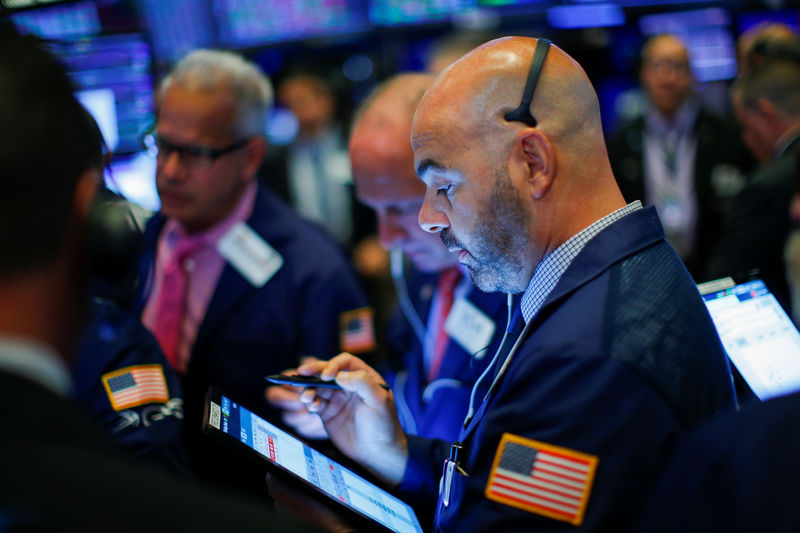By Gertrude Chavez-Dreyfuss
NEW YORK (Reuters) - The U.S. Treasury yield curve temporarily inverted on Wednesday for the first time since June 2007 in a sign of investor concern that the world's biggest economy could be heading for recession.
The inversion - where shorter-dated borrowing costs are higher than longer ones - saw U.S. 2-year note yields rise above the benchmark 10-year yield, which fell to 1.574%, the lowest since September 2016.
U.S. 30-year yields also plunged, dropping to a record low of 2.015%.
The curve was last at 0.70 basis point after the inversion reversed.
Weak economic data and low inflation around the world, trade conflicts, and political tension in places such as Hong Kong have sparked worries about global growth, fueling market expectations of central bank interest rate cuts and triggering steep falls in government bond yields.
The U.S. curve inverted on Wednesday to as much as minus 2.1 basis points , a metric widely viewed as a classic recession signal. The last time this yield curve inverted was in June 2007 when the U.S. subprime mortgage crisis was gathering pace.
The U.S. curve has inverted before every recession in the past 50 years, offering a false signal just once in that time.
GRAPHIC: U.S. Treasury curve inverts - https://tmsnrt.rs/2YLaA5f
Some market players though are not convinced an inverted yield curve will necessarily lead to recession.
"Certainly a yield curve inversion is not indicative of an imminent recession. If anything, it's probably 18 months out," said Gautam Khanna, senior portfolio manager at Insight Investment in New York.
Khanna believes U.S. economic numbers are still positive overall.
"The question is: What is going to drive an imminent recession, when you look at the data? You don't see that yet," Khanna said.
GRAPHIC: Yield curve inversions typically precede recessions - https://tmsnrt.rs/2YN5XYj
In afternoon trading, U.S. benchmark 10-year Treasury note yields (US10YT=RR) were last down at 1.597%, from 1.68% late on Tuesday.
Yields on 30-year bonds slid to 2.041% (US30YT=RR) from 2.137% on Tuesday.
While the yield on nominal 30-year bonds had not yet broken below 2%, Treasury futures market signals indicated an expectation it would do so soon. The implied yield on the 30-year Treasury futures contract expiring in September was 1.74% on Wednesday, near a record low.
"This latest move on the long end of the U.S. curve is sending the Fed a clear message: the notion of a slow, methodical 'mid-cycle adjustment' is very much in question, and at the same time so is the efficacy of lower rates to solve the issues at hand," said Gregory Faranello, head of U.S. rates at AmeriVet Securities in New York.
At the short end of the curve, U.S. 2-year yields fell to 1.589% from Tuesday's 1.669% (US2YT=RR).
In March, the inversion of the U.S. yield curve hit 3-month T-bills for the first time in about 12 years when the yield on 10-year notes (US10YT=RR) dropped below that for 3-month securities.
That metric reverted back and then inverted again in May. Over that period, the 2- to 10-year curve did not invert.
